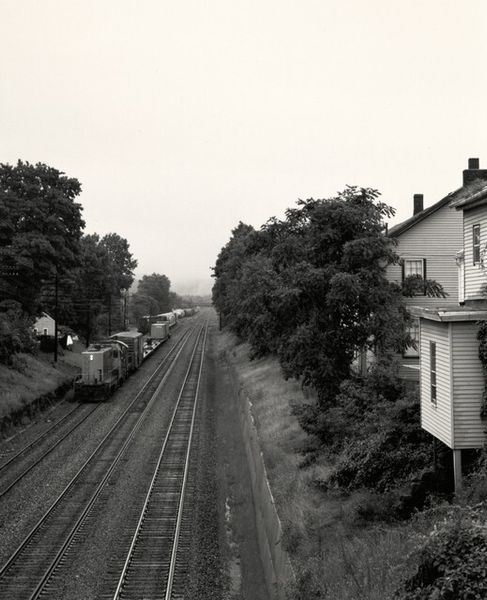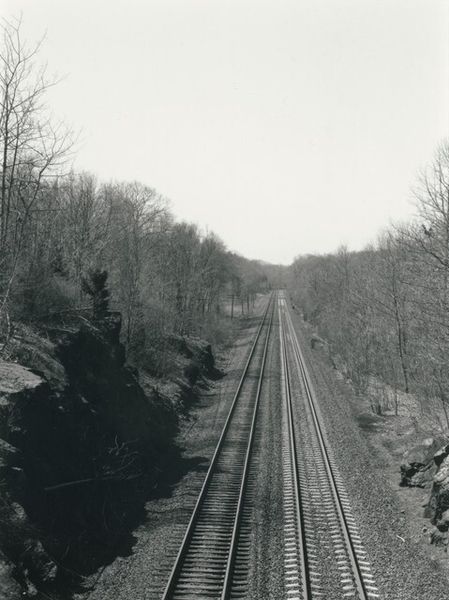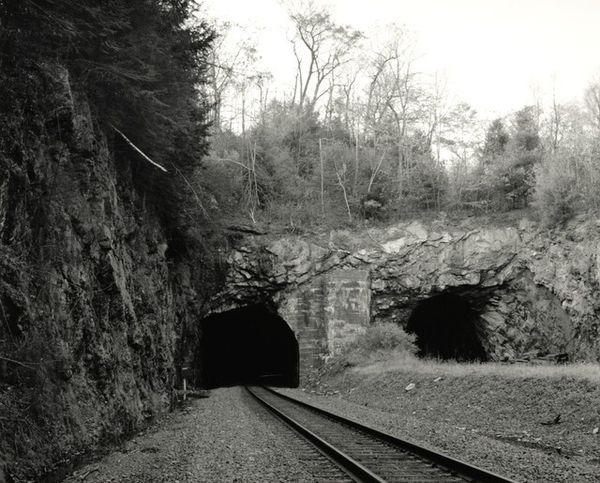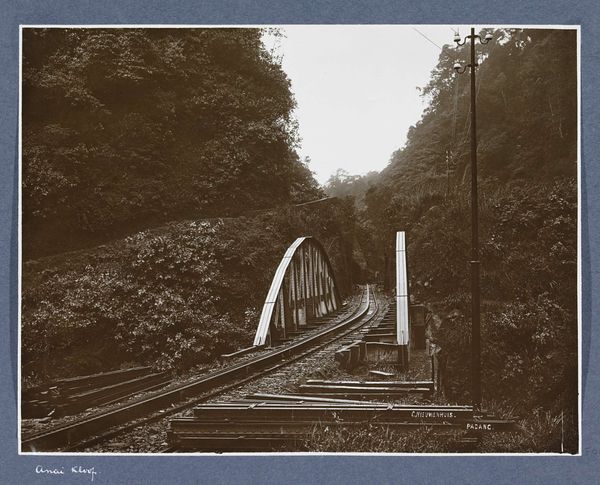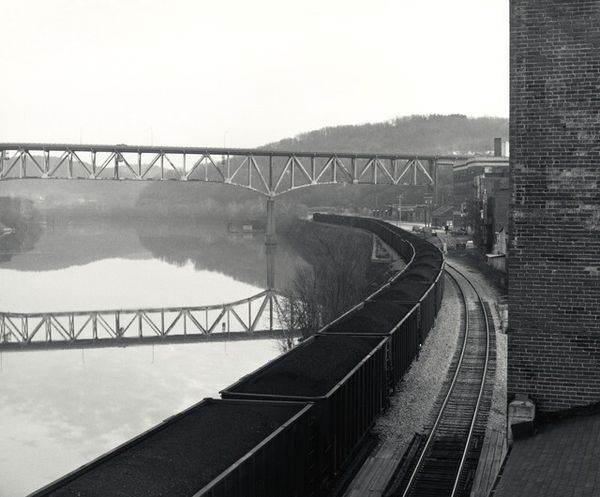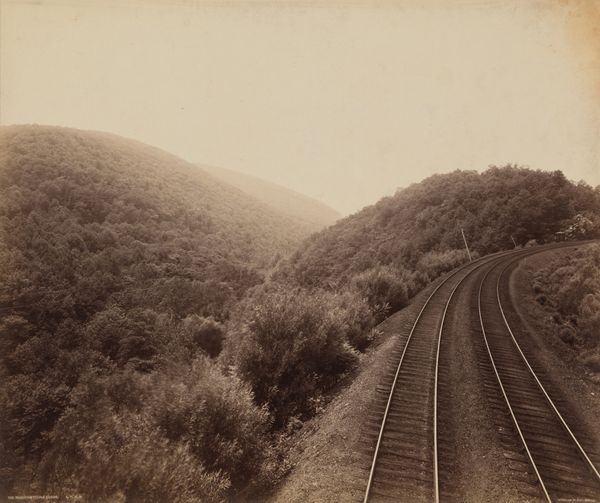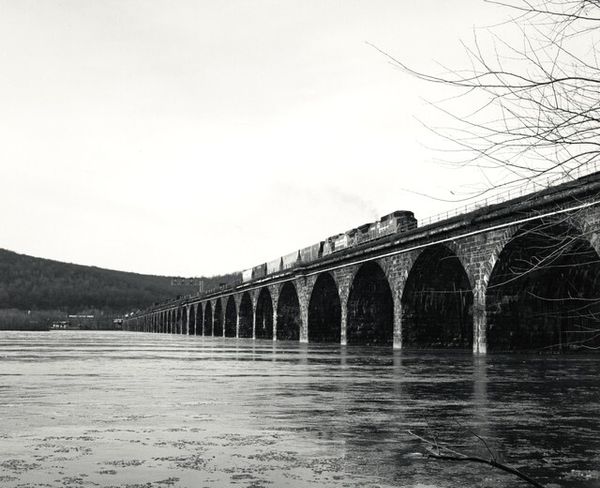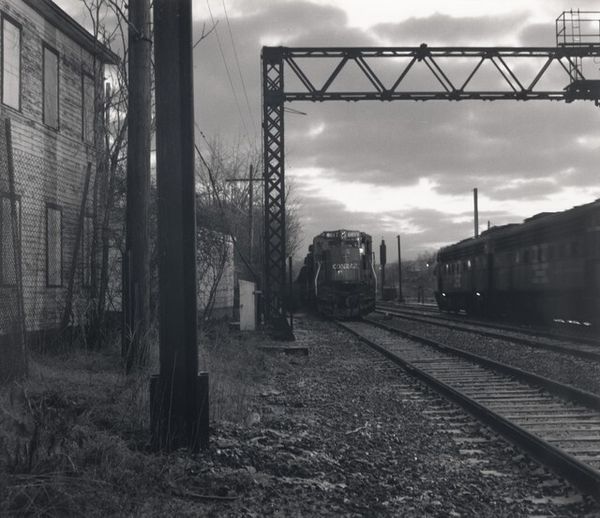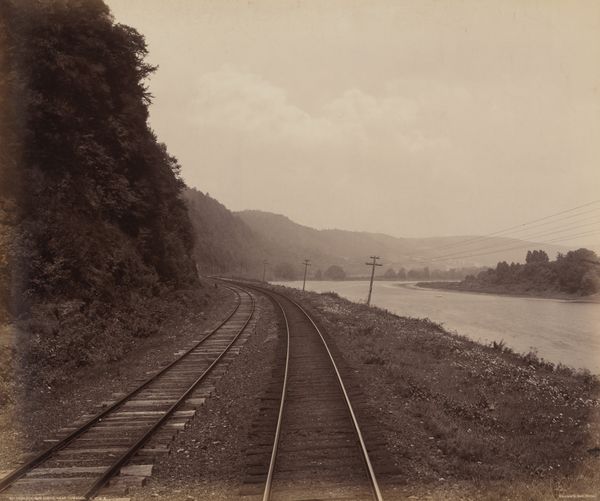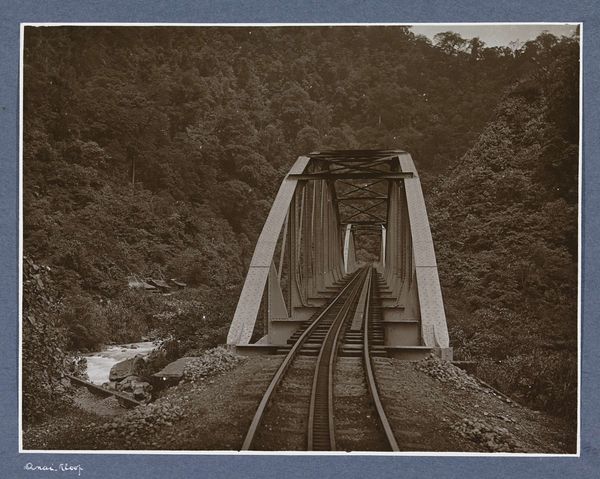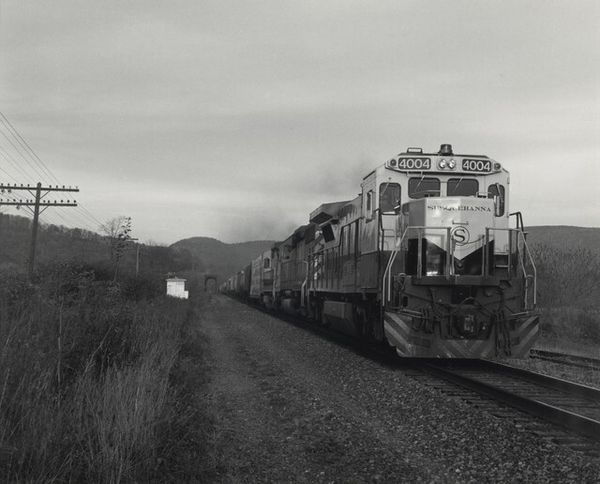
photography, site-specific, gelatin-silver-print
#
landscape
#
photography
#
black and white
#
site-specific
#
gelatin-silver-print
#
monochrome
#
realism
#
ruin
#
monochrome
Dimensions: image: 24.2 × 31.7 cm (9 1/2 × 12 1/2 in.) sheet: 27.9 × 35.3 cm (11 × 13 7/8 in.)
Copyright: National Gallery of Art: CC0 1.0
Curator: Let’s consider James Welling’s gelatin-silver print, "Hunters, Ramapo, New York" from 1990. Editor: It's a stark black and white image of train tracks curving into the distance. There’s a definite moodiness, a sense of forgotten industry. What do you see in this piece? Curator: Well, I'm drawn to how Welling highlights the physicality of the photographic process itself. The gelatin-silver print, a fairly traditional medium, becomes a lens through which to examine the infrastructure of transport and its impact on the landscape. We see the trace of industry but it is the ruin of industry – what materials were required for its production and where are those materials now? Editor: The emphasis on 'ruin' – that brings up questions of labor doesn’t it? Were "hunters" meant literally, or something more abstract perhaps workers 'hunting' for opportunity or a job in the area? Curator: That is insightful. I want to propose that labor is embedded in the creation and maintenance of these structures and their inevitable decay, highlighting the often-overlooked workforce involved in building and running these rail lines. Consider too the consumption these rails once supported - what products and commodities were being transferred and bought when these were in operation. What relationship did workers and the consumers have at this intersection? Editor: So you’re thinking about how Welling directs our attention to both what went into the railway, as well as what comes out? By focusing on material, you’re uncovering a hidden history about consumption and labor – that’s fascinating! Curator: Precisely. And isn’t it compelling how a simple gelatin-silver print can unveil such a complex interplay of production, consumption, and the inevitable decay of material culture? Editor: Absolutely. Looking at it now, it's more than just a landscape; it’s a commentary on the social and economic forces that shape our world. Curator: I agree, a poignant reflection on our relationship with the manufactured world.
Comments
No comments
Be the first to comment and join the conversation on the ultimate creative platform.
